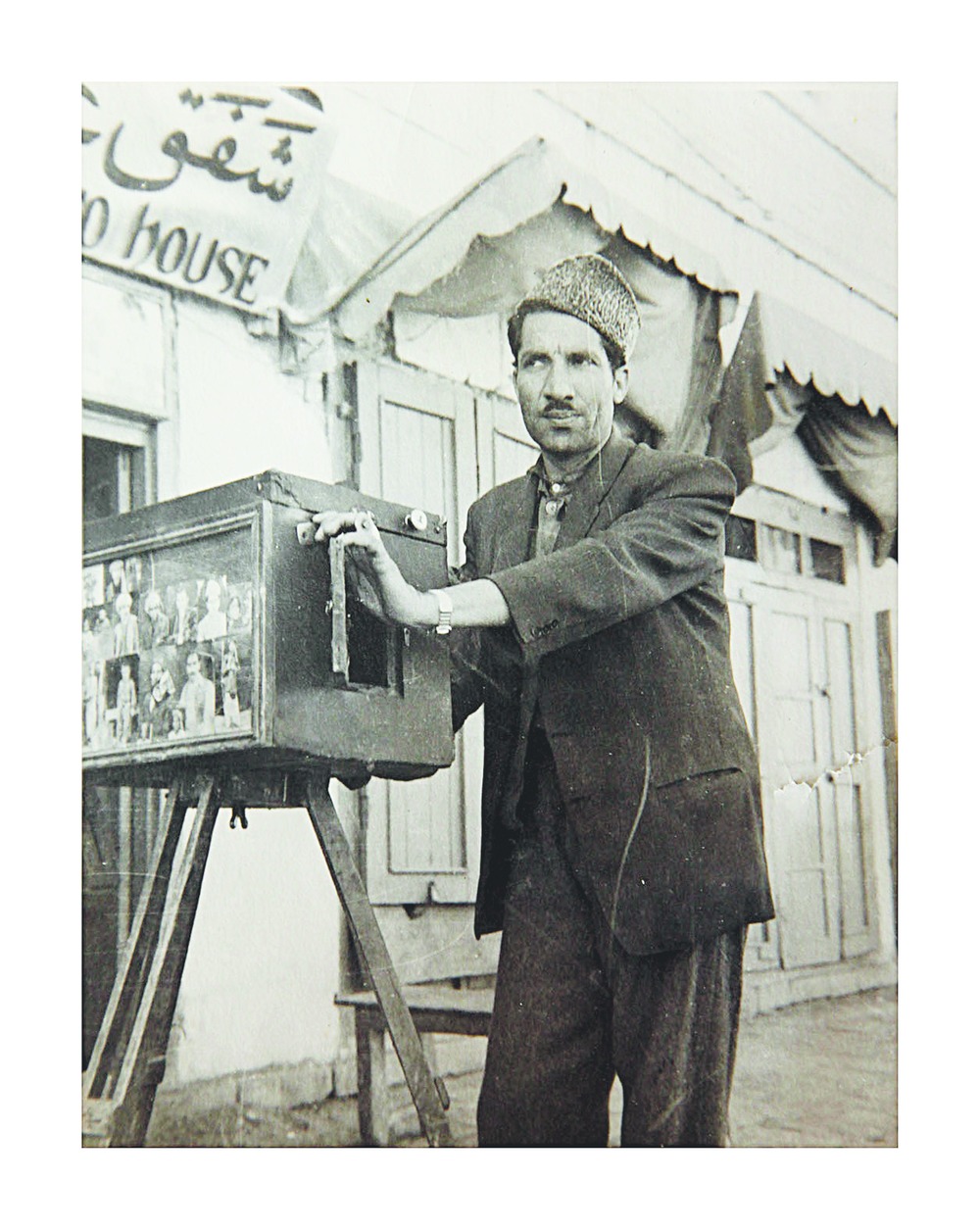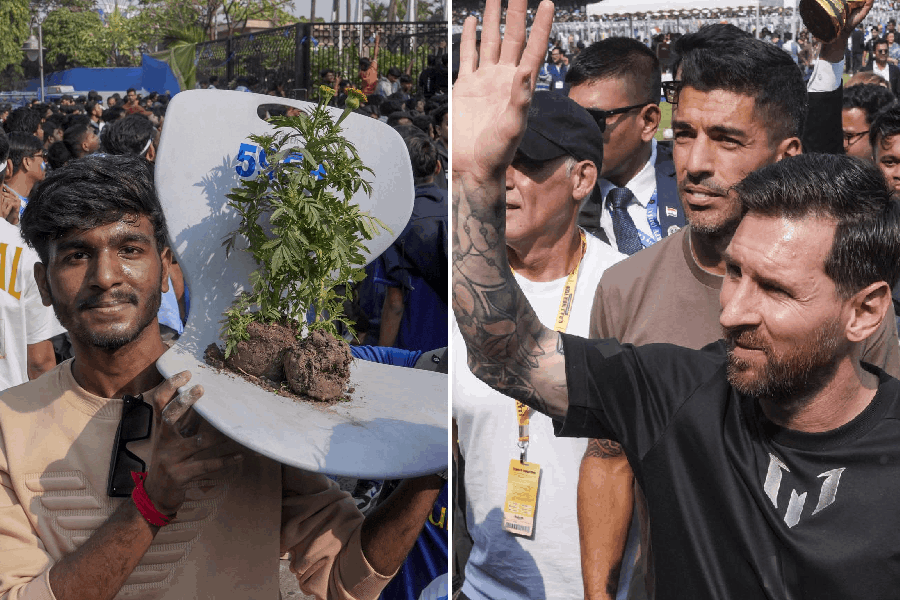
In the last years of the 19th century, in Murshidabad district, two men from widely disparate social backgrounds were busy documenting and reviving the silk industry. While N.G. Mookerji (or Mukherji), a member of the provincial civil service, was deputy magistrate of the district, Dubraj Das was a master-weaver, one who according to Mookerji could "set the loom to any pattern he sees". Mookerji's deep commitment to fine weaving resulted in two publications, invaluable for those interested in the history of Baluchari silk work. He identified Baluchar as being a few miles north of Behrampur, on the banks of the Bhagirathi. This was confirmed in a 1958 article by Asok Mitra, a member of the Indian Civil Service and also a cognoscenti and collector of Indian textiles. He wrote the piece in a brochure published for an exhibition curated by Shubho Tagore who had been deeply involved in reviving this specialized form of weaving. By the 1990s, as there was no evidence of Baluchar, people were told that the meandering river had swallowed it up. However, Eva-Maria Rakob who has done considerable work on Baluchari silks hypothesizes that as the place was no longer important when the specialized weaving lost its salience, it had dropped out of public memory.
That a micro socio-economic history of the region can be reconstructed through a study of Baluchari textiles substantiated with a look at the work of the Company School of painting, and the patachitra of the Kalighat patuas is convincingly argued by Eva-Maria Rakob, Shilpa Shah and Tulsi Vatsal in the catalogue accompanying a recent exhibition entitled Sahib, Bibi, Nawab - Baluchar Silks of Bengal: 1750-1900 in Mumbai. The exhibition showed rare holdings from the Tapi Collection - the private collection of Praful and Shilpa Shah. The well-curated display brought into focus the unique role of weaving in constructing a discourse on the everyday living of the region.
Woven from locally cultivated mulberry silk, the rich creamy base took colour easily - deep maroons, reds and purple being favourite hues. The shot effect was achieved by using different coloured thread for the warp and for the weft. However, for those who know the Baluchari sari, it is the motifs on the woven borders and elaborate pallavs that are of special interest. These complex patterns were "done on traditional drawlooms using a supplementary patterning weft" and it was during the mid-18th to the late-19th century that the industry flourished. Subsequently, there has been a revival, and it is possible to buy a contemporary Baluchari sari that re-imagines old motifs and styles.
Baluchari textiles, the authors point out, are inextricably linked to the history of Murshidabad of the 18th and 19th centuries. When Murshid Quli Khan, the Mughal governor of Bengal, shifted his capital from Dacca to Maksudabad in 1704, he not only renamed it Murshidabad but soon also found it to be a flourishing trading post. Polyglot communities of Gujarati and Marwari traders, Armenians, Jews, Arabs as well as Dutch, English, French and Danish merchants had made the town their home, drawing on the existing rich silk industry. Though the Mughal Empire was in decline, the region was of some economic interest, and foreign merchants were, by 1740, well entrenched. It is possible that the weaving tradition began when Gujarati weavers arrived in the increasingly affluent area that Robert Clive is supposed to have likened to being "as extensive, populous and rich as the city of London".
Three decades later, in 1772, following Clive's victory, the capital of Bengal was shifted from Murshidabad to Calcutta. In spite of the maelstrom that was inevitable, Murshidabad's silk industry continued to flourish. In the later years of the 19th century, much of the fine weaving was done by a small group of men, Dubraj being the most prolific and talented among them. Mookerji records in some detail the evolution of this maker of leather drums into a master weaver. Not only was he weaving textiles suited to changing tastes but he also developed a fast green natural dye, the only colour not available commercially in the region.
The authors show how a commonality of motifs characterized indigenous art in the region - such motifs echoed change in modes of travel, styles of dress as well as reflected the unmistakable interaction between the ruling class and the local population. Innovativeness of the artistic oeuvre quickly captured such changes in life-style, quite often using satirical tropes to make a point; this was particularly evident in the art of the Kalighat patuas. At the same time, some images endured, and though Rakob has suggested that saris with nawabi and zamindari motifs should be regarded as being older than those with Englishmen on horses, this assumption needs corroboration. For instance, the motif of the elephant and rider has been around for centuries and its popularity "shows no signs of receding". However, when steamers and trains started appearing in Baluchari anchals, they were clear indicators of change. Nor were any of these styles ossified and set in stone - changes were keenly observed and incorporated. In early Balucharis, nawabs with falcons [see image] were favourite motifs, to be overtaken by the nobility in steamers and even trains. For keen observers of the development of the kalka - stylized paisley - it was the incorporation of the Kashmiri-style mango-shaped butas that helped date Baluchari saris. Thus, saris that incorporated the shawl's buta could be dated to around 1820.
The new English "nabobs" found many aspects of the nawabi lifestyle appealing and took to smoking the hookah and wore Indian-style angarkhas and pyjamas - and not only in the privacy of their homes. Soon bibis moved into the houses of Europeans, some becoming common-law wives. Who then, were patrons of this highly stylized, expensive weaving style? While the absence of visual evidence, write the authors, make it difficult to come to any definitive conclusion, patrons must surely have been the nawabs and the Muslim nobility, Company officials and European merchants. It is also possible that Gujarati traders, too, bought such saris. Shawls and chadars suitably embellished with butas were worn by men - but who, then wore the saris? The authors write that "it does seem surprising that conservative patriarchs in eighteenth- and nineteenth-century Bengal would allow their wives and daughters to appear clad in saris sporting hookah-smoking nawabs and courtesans, hunters, and European officers with cannons". One could hardly imagine women of the reformist Tagore family in such saris, let alone those from the homes of conservatives like Radhakanta Deb. A cursory trawl through studio photographs from the 1870s onwards show bhadramahilas in heavy Benaresi silk saris with elaborate zari borders - but no Balucharis. The only women who are likely to have worn such saris are elite courtesans or tawaifs where most often these were gifts from patrons and admirers. Such an assumption is also problematic, particularly if these women were Muslims. As Asok Mitra pointed out, not only did orthodox Islamic taste eschew the use of human figures on clothing, but it was also unlikely that "figures of Europeans with their murderous machines, who had just wrested power" be acceptable for the attire of "Muslim ladies of rank".
The mystery, then, remained: who wore these elaborate garments? It is possible that Baluchari saris, shawls and material formed part of the trade route out of Bengal and were most certainly likely to have been highly-valued gifts exchanged between the nobility and others, including the rulers. As gifts were quite often part of an official relationship, they were not used but kept carefully away, a sign of status and prestige. The Paris Exhibition had a Baluchar sari on display and the Royal Jubilee Exhibition held in Manchester in 1887 showed three saris as a part of the selection on fine silks. That the Western aesthetic sensibility had a distinct interest in Baluchars is clear from N.G. Mookerji's comment that the expensive saris woven by Dubraj were for European officials at Behrampur even though for them "these high-priced saris are of no practical use". These were clearly trophies of Empire, to be displayed like tiger skins and antiques removed from architectural sites.
By the closing years of the 19th century, Baluchari textiles were on the decline. This was due not only to a fall in the quality of the raw silk caused by out-dated production methods, but also to changing fashions. Yet, by the beginning of the 20th century, other parts of India adopted the motifs - but not the method of weaving. While "response to the Varanasi Baluchar has been dramatic", Vishnupuri Baluchars have gone a step further and used mythological figures of the terracotta temples of the region in their weaving. Baluchari cognoscenti no doubt regret the "modernization" of a tradition; but contemporary pieces do act as useful mnemonic devices, nudging us to remember a past of rich tapestries, hookahs and howdas.










